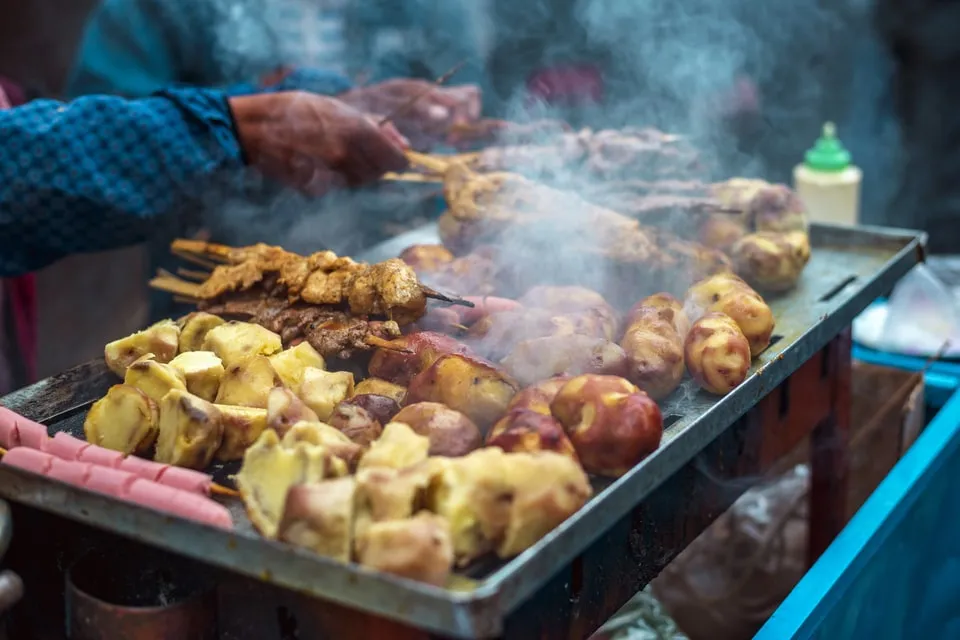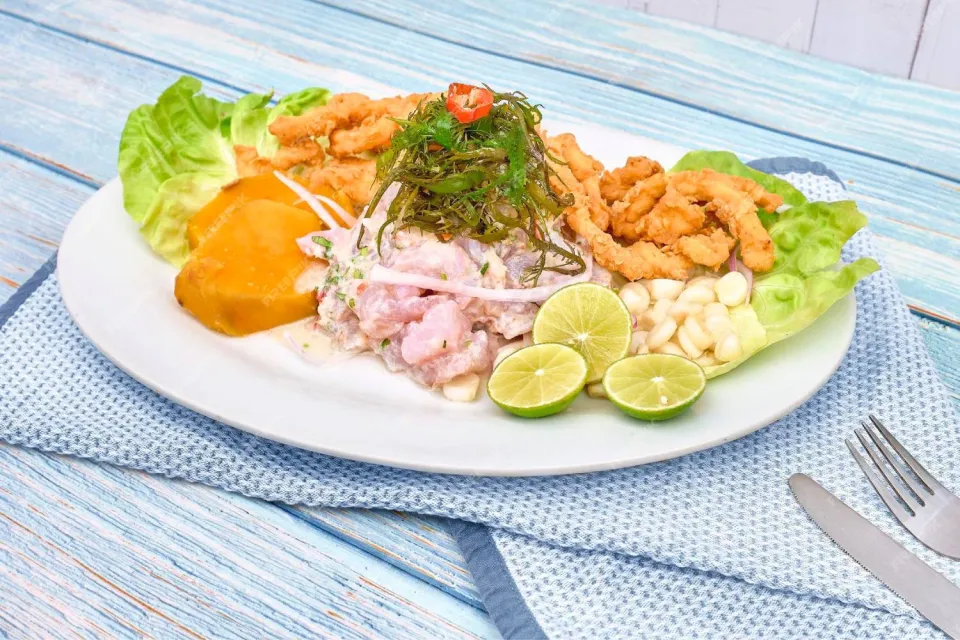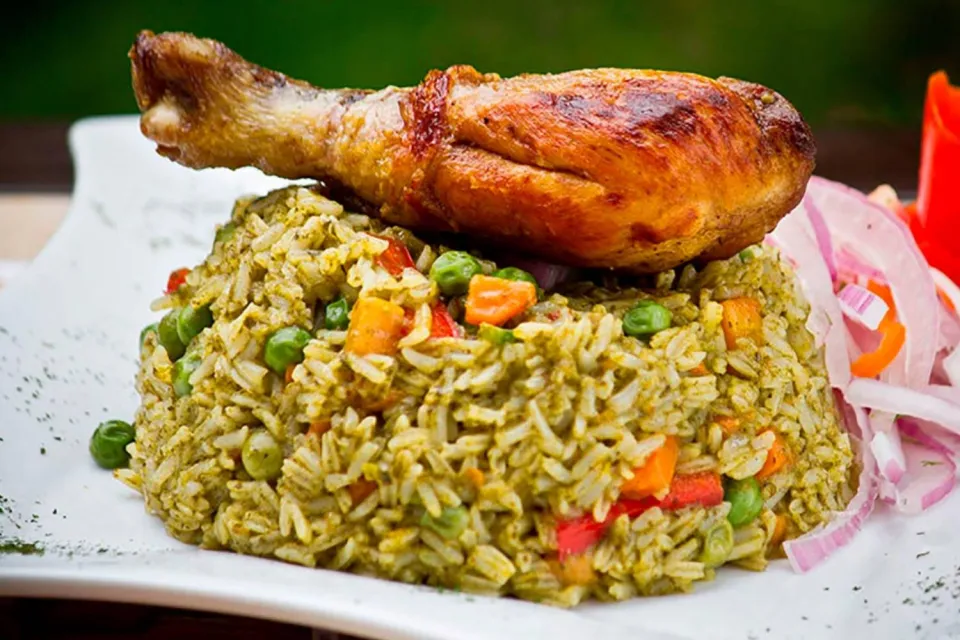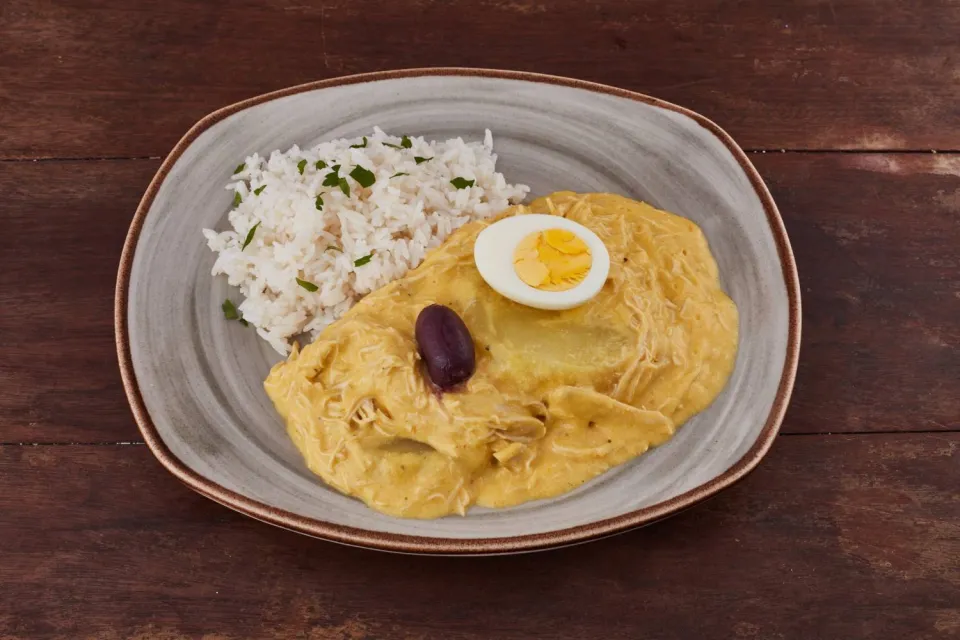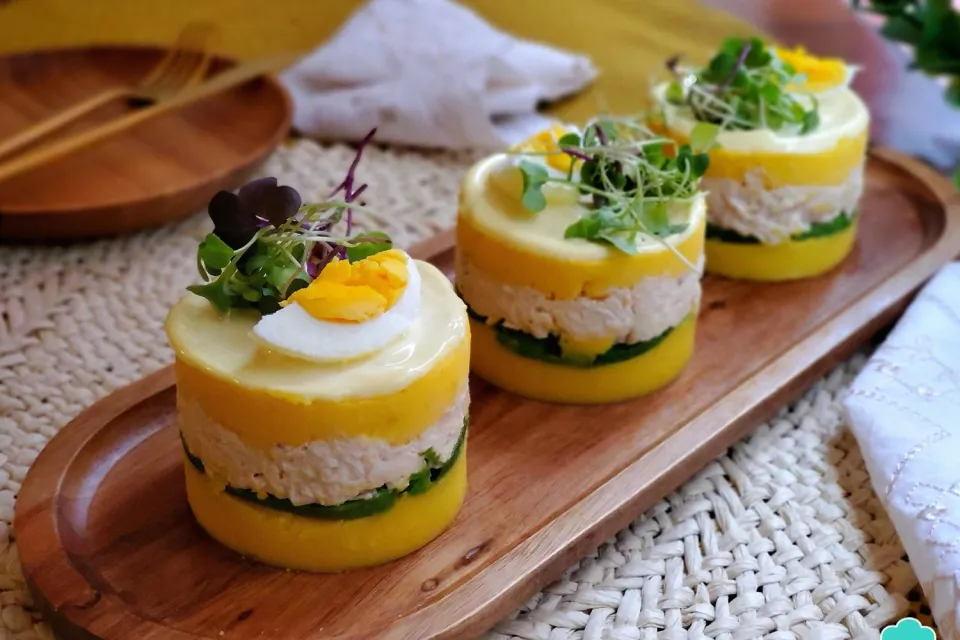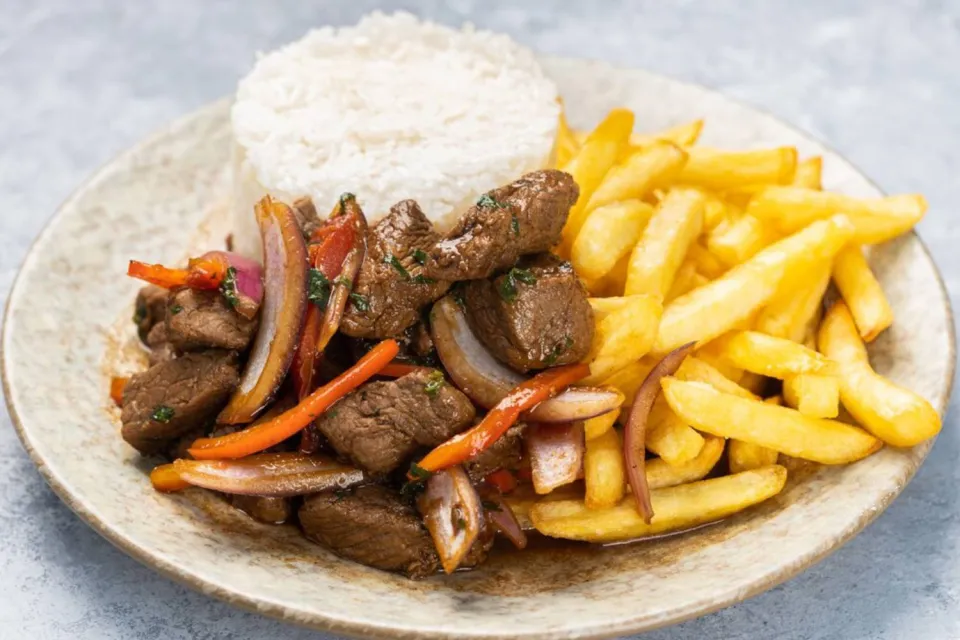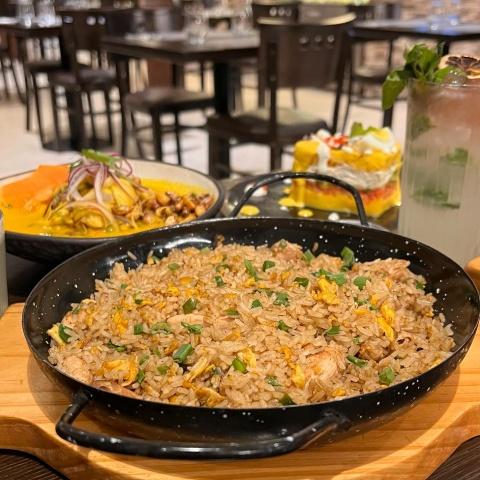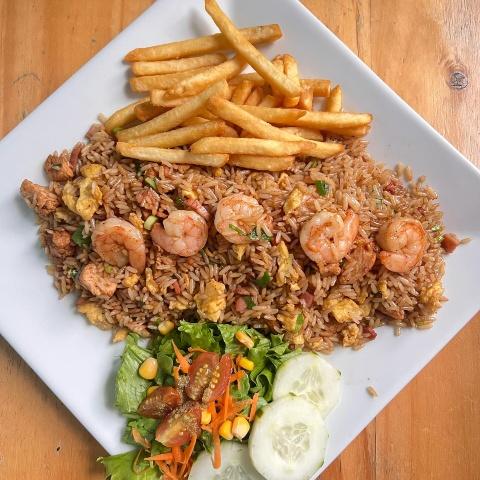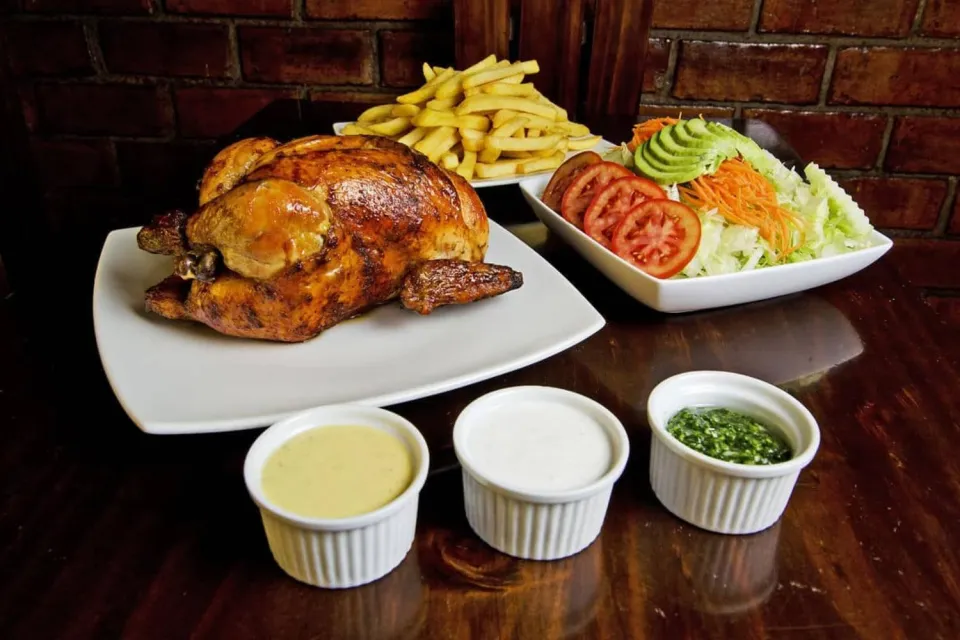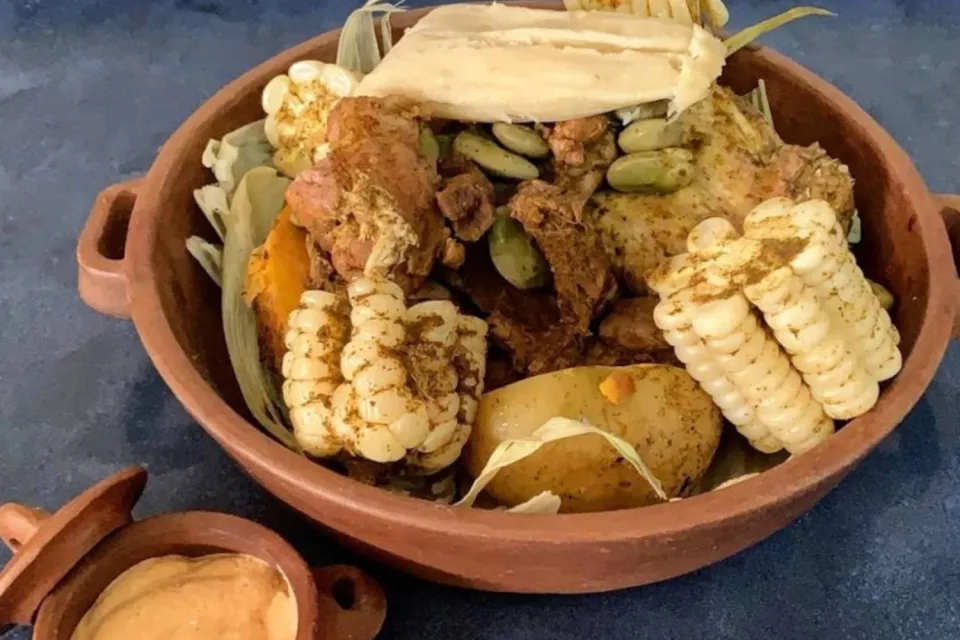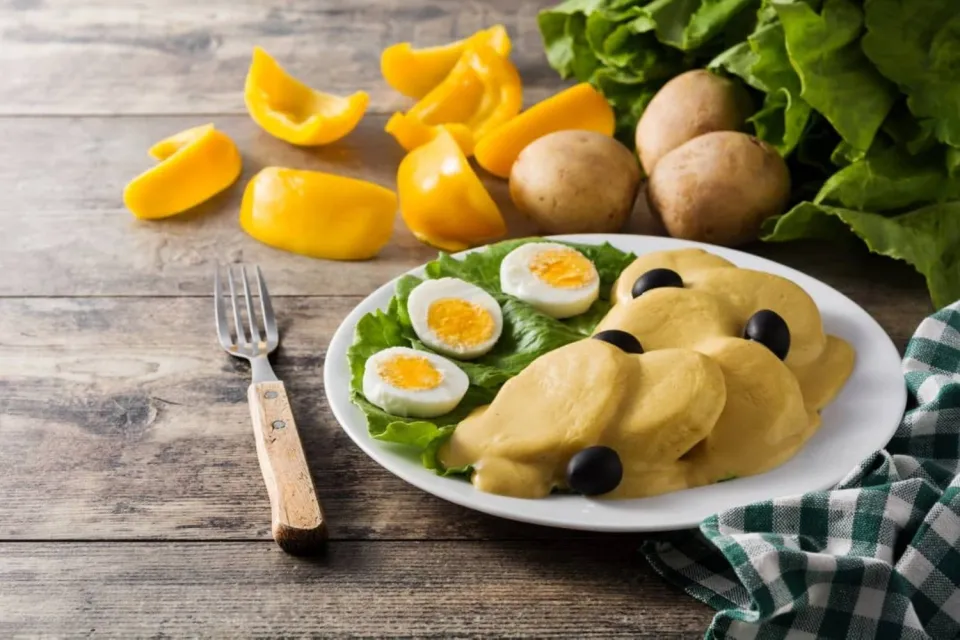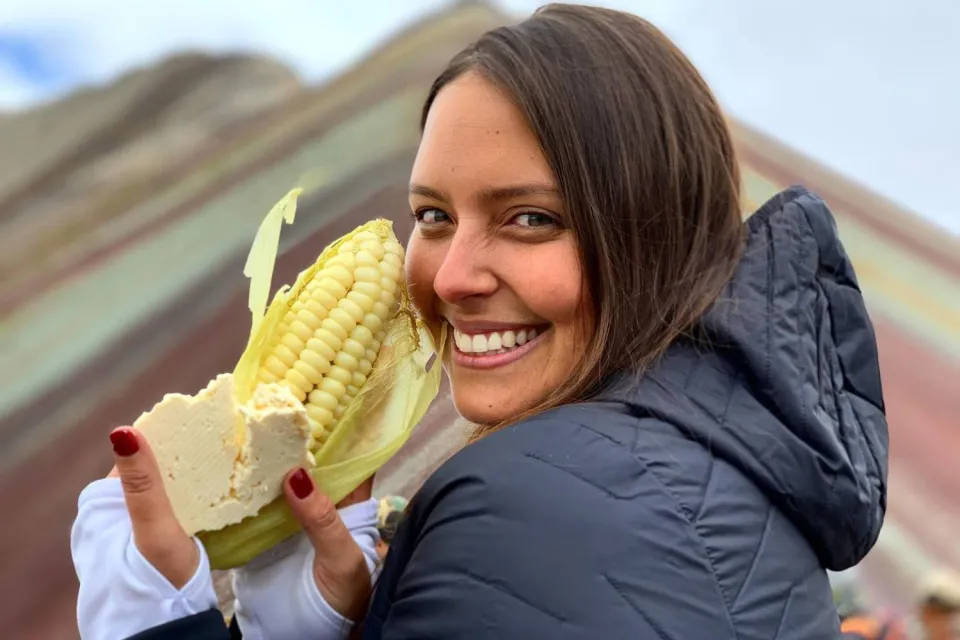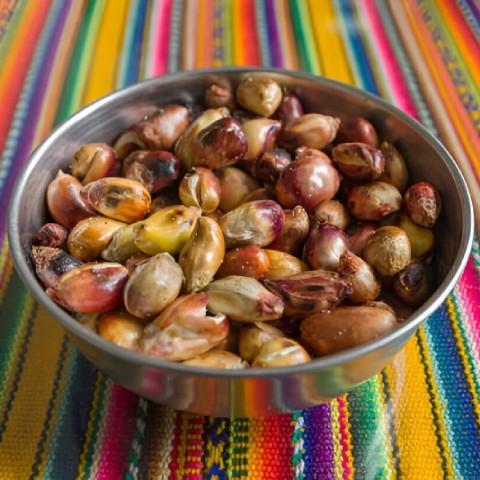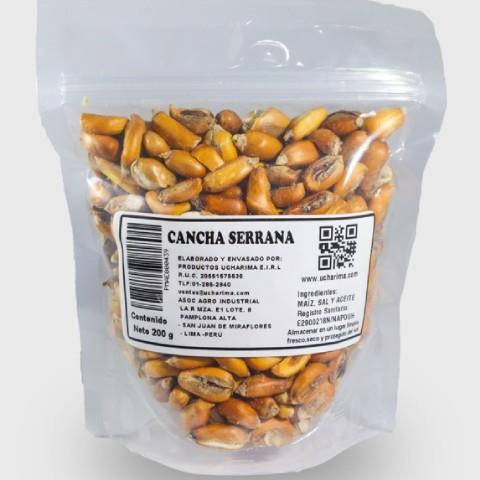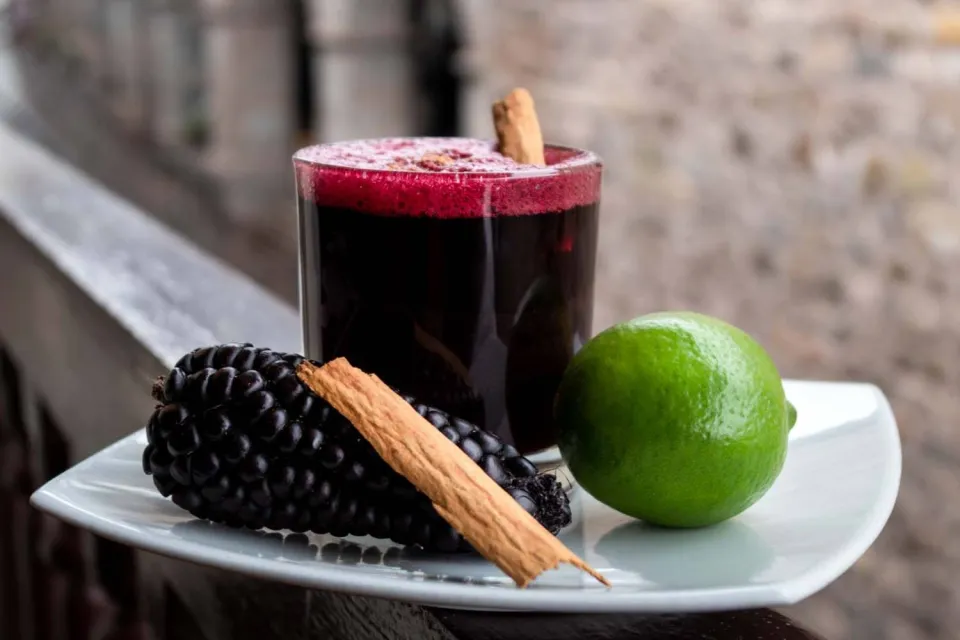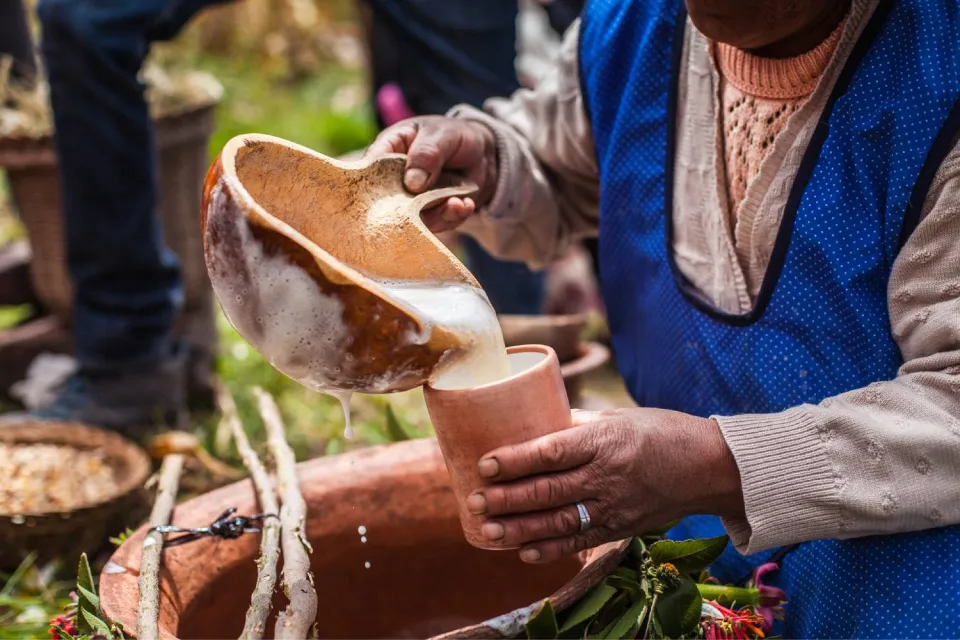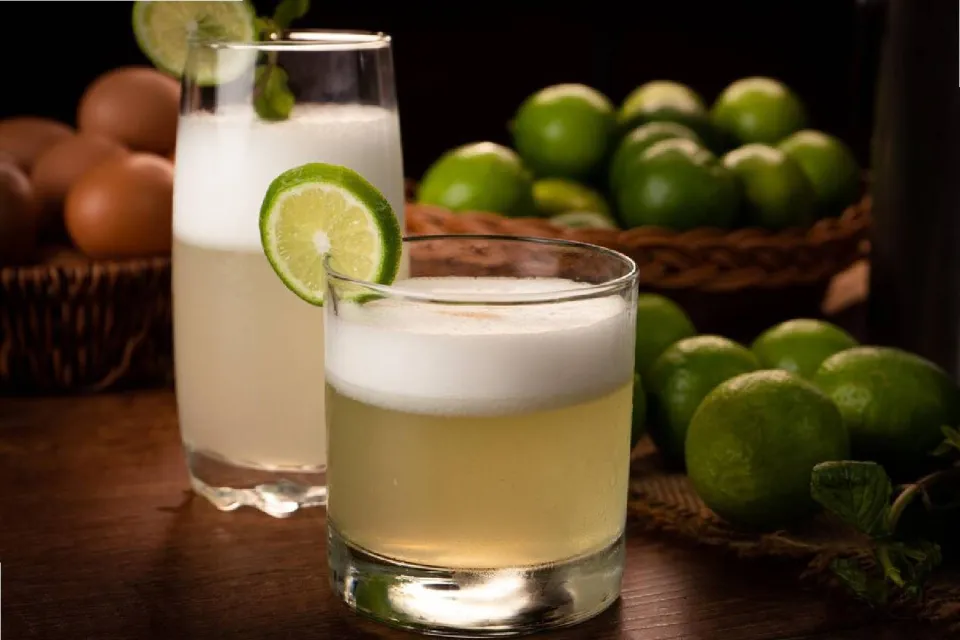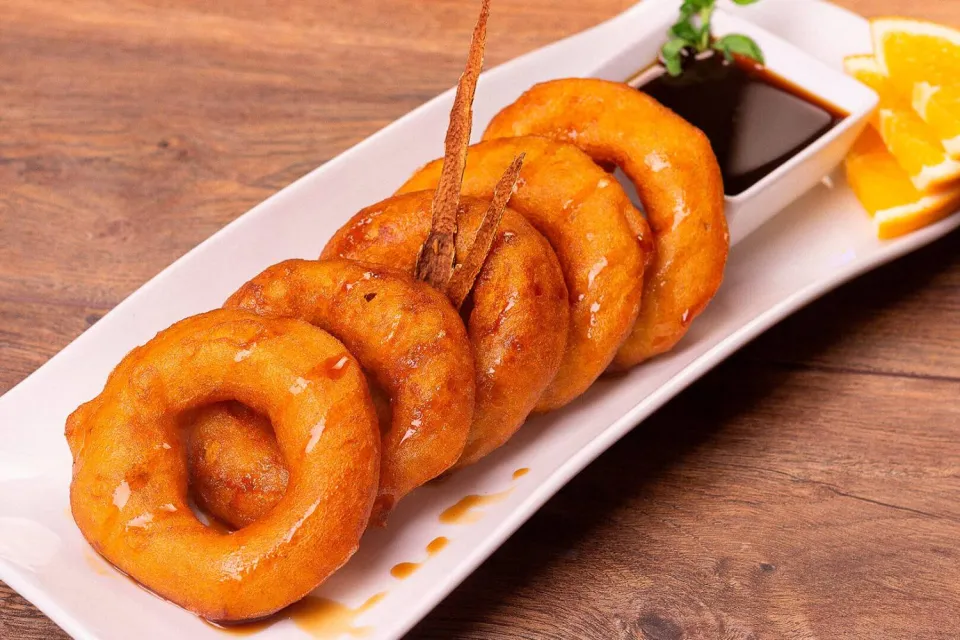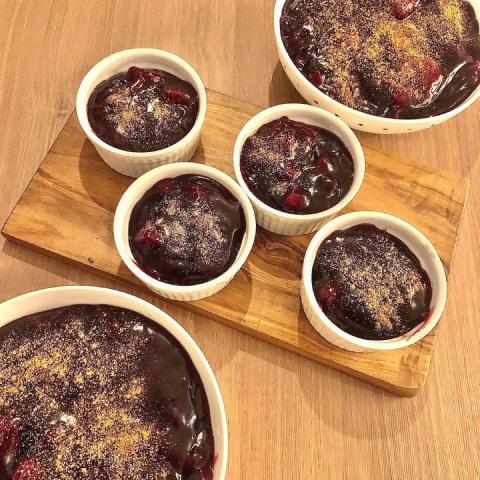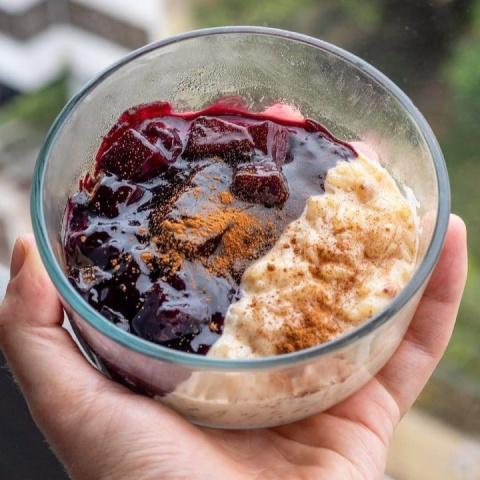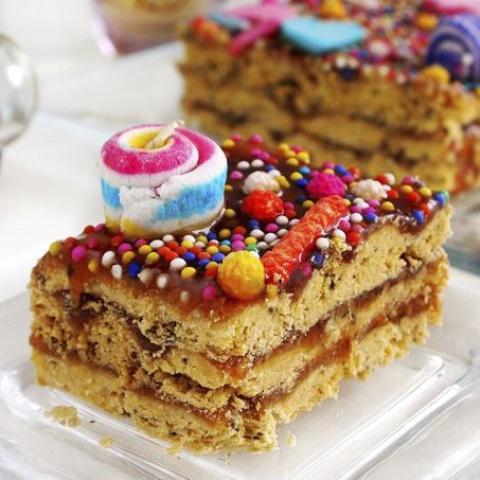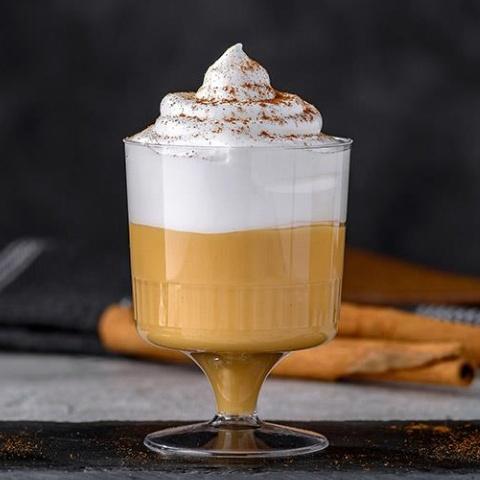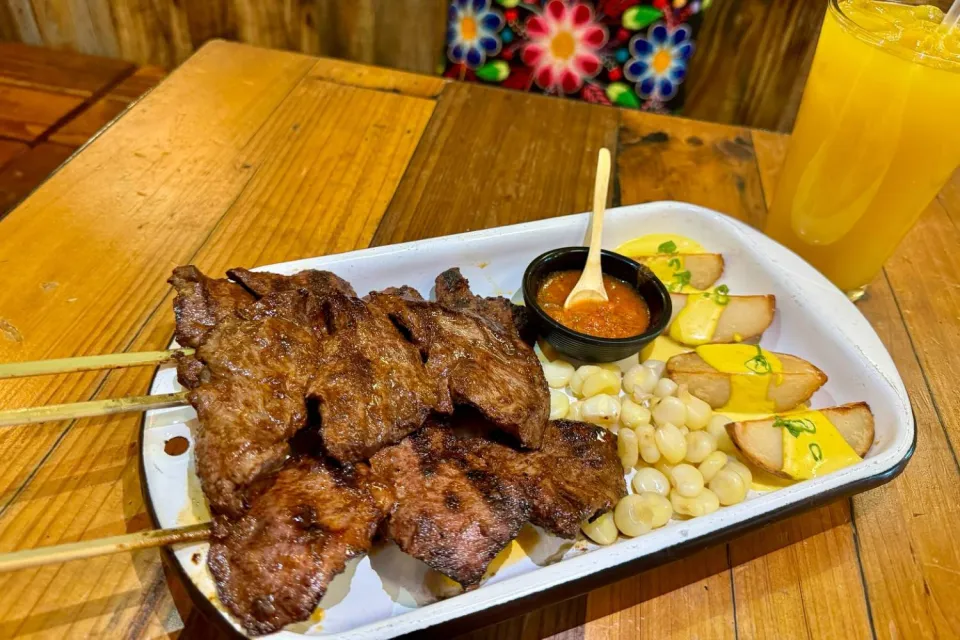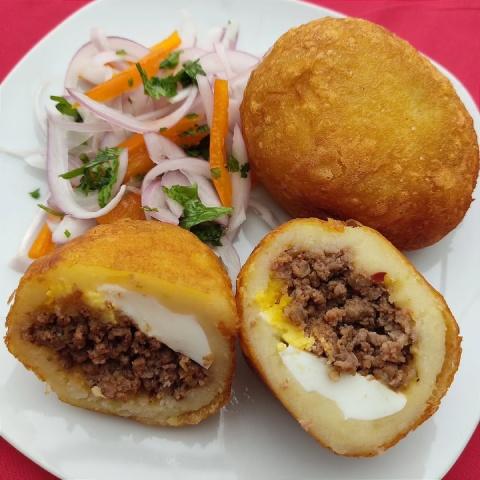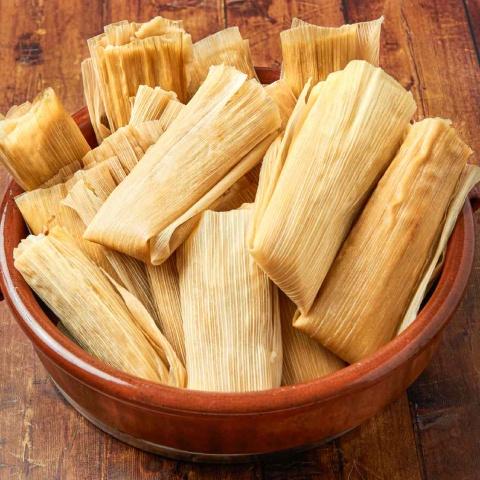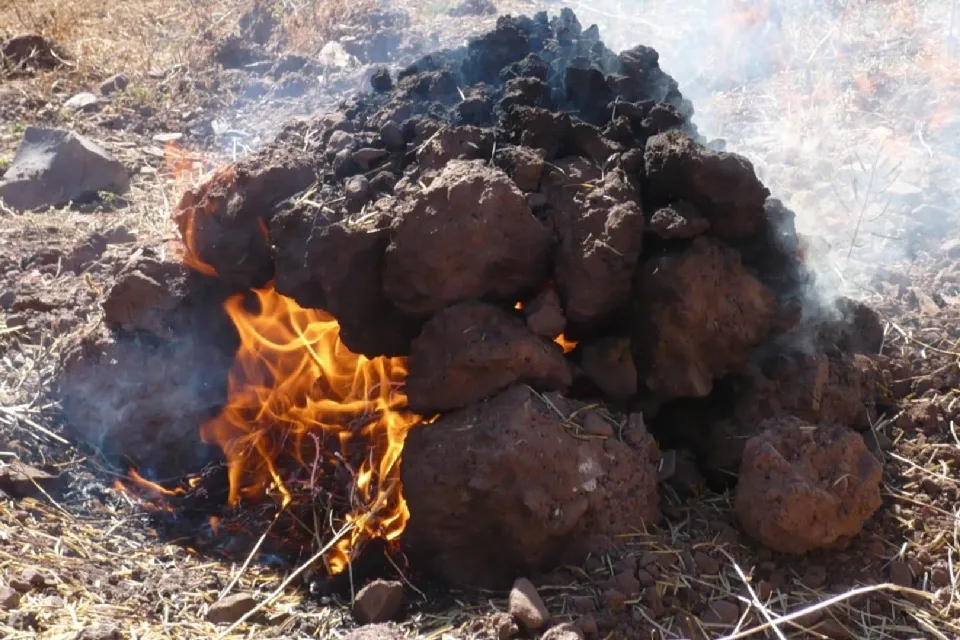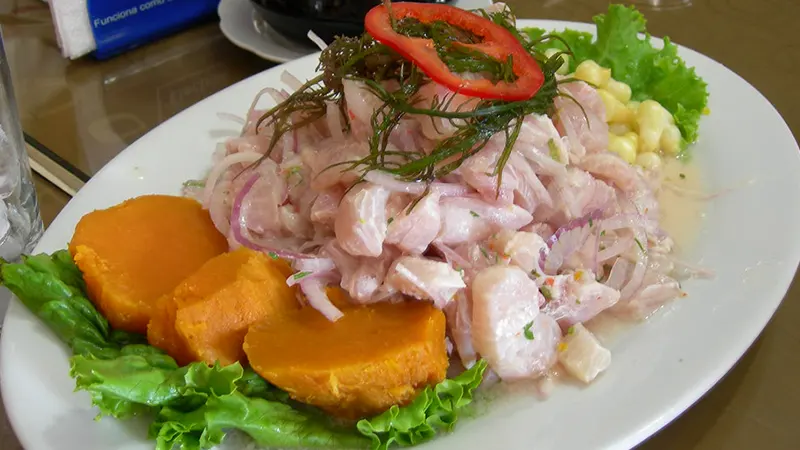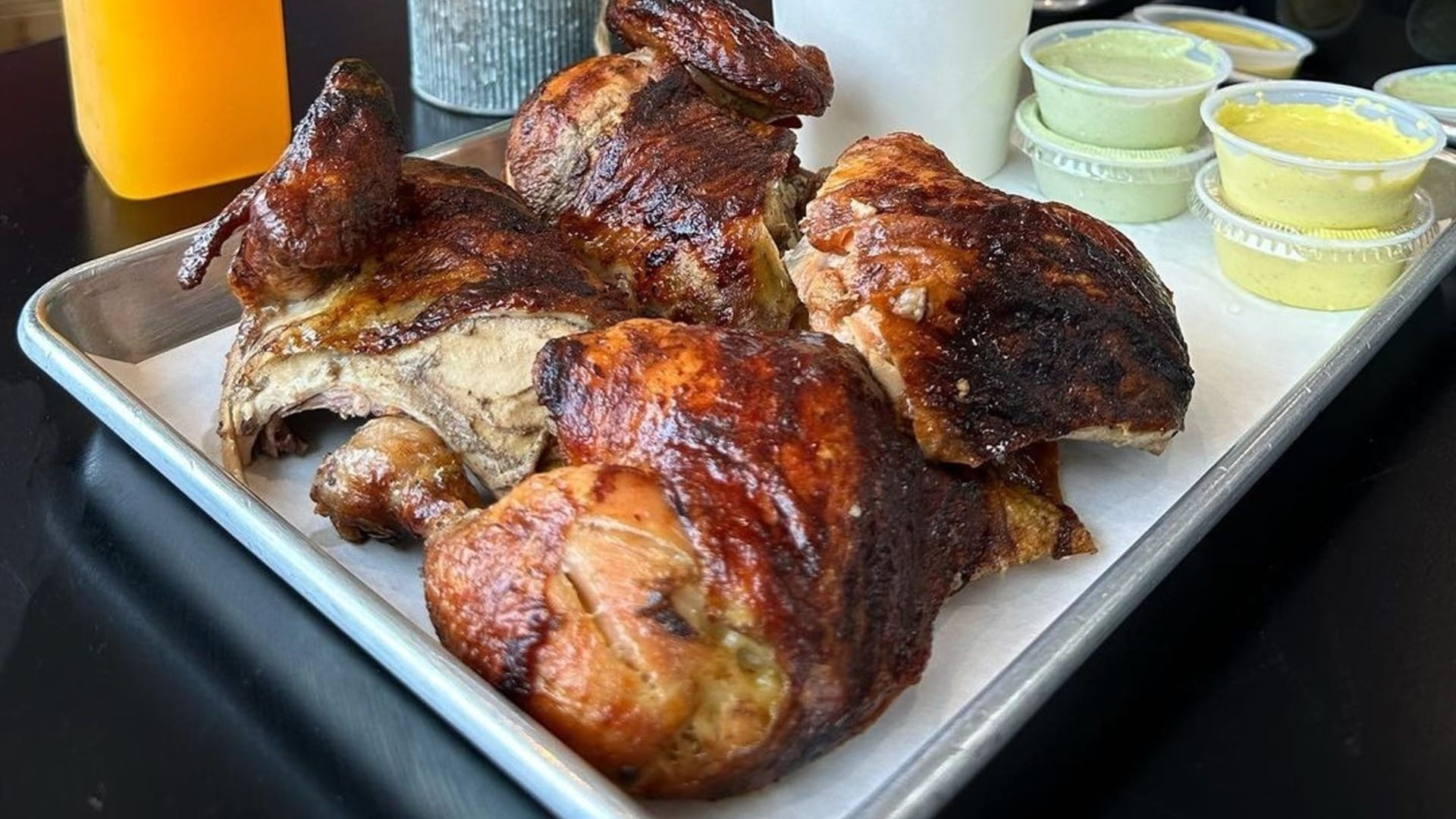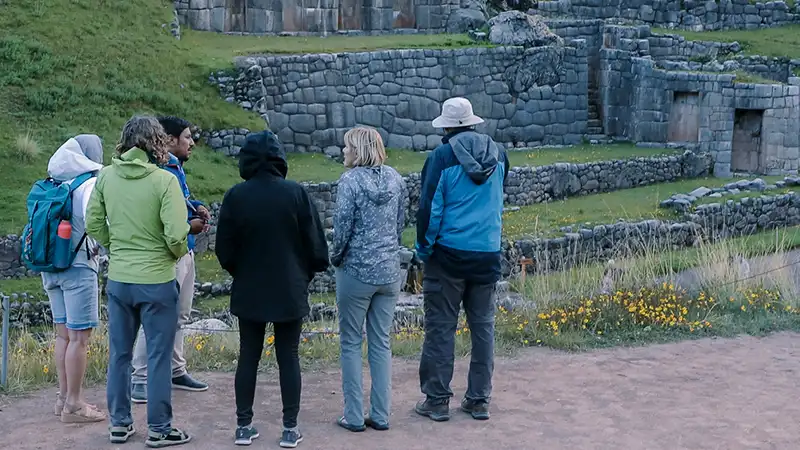Peruvian cuisine has 491 typical dishes, in addition to 2500 soups and 250 representative desserts, is another tourist attraction. Of all the dishes of Peruvian food I will show you those that you must try if you come to Peru, because you will find them in most restaurants.
New flavors, preparation techniques, influences of the best foreign food that when combined with Peruvian food, created delicacies that few can resist.
One of the best culinary experiences globally are Peruvian dishes for several reasons, which we will explore below. While opinions on the "best" food will always be subjective, many compelling factors make Peruvian cuisine stand out.
What is Peruvian Food?
Peruvian food is a set of traditional dishes that became popular over time, where its four traditional foods are corn, potatoes and other tubers. And the way of preparing food received influences from abroad: rice, wheat, and meats (fish, pork, and chicken).
The chef that stands out is Gaston Acurio for giving importance to the great quantity and variety of local ingredients. There is also an influence of the indigenous population that includes the wisdom of the Incas.
History of Peruvian Cuisine
Throughout history, European, Asian, and some African cultures influenced the origin of Peruvian food. Ingredients and techniques from diverse origins joined the Peruvian cuisine.
Peru's great richness in its millenary ingredients cultivated in different climates throughout the country, as a consequence there are more than four thousand varieties of potatoes, corn, and more.
Modern chefs refined Peruvian cuisine with more techniques and pioneered new styles. Peruvian cuisine gained international recognition as one of the top culinary destinations.
Because of all its traditional dishes and memorable, unique flavors. It is a truly touristic experience to taste each of them.
Traditional Peruvian Dishes Most Popular with Tourists
1. Ceviche
From the first bite, the fish melts in your mouth with a special touch of citrus that will make you feel more energetic. When you combine the juice with the fish, corn and sweet potato in one bite you will feel a new and unique flavor that will leave you wanting more. It is usually spicy but it all depends on the place you choose to eat it.
You may have heard that several South American countries also have their ceviche, but the flavor of Peruvian ceviche is unique. Besides being one of the most representative dishes of Peruvian food.
That is why UNESCO gave it a recognition as a heritage dish on December 6, 2023. Even ceviche is healthy and good for weight loss.
Short History of Ceviche: How did it originate?
The Mochica culture is the first civilization to make a dish based on fresh fish and cooked with the citric juice of a fruit called "tumbo". It was during the pre-Inca period where its preparation also used herbs from the region.
What ingredients does ceviche contain?
- Fish
- chopped onion
- chopped cilantro leaves
- yellow chili
- lemons
- salt and pepper.
And to accompany it, parboiled tender corn, parboiled sweet potato and lettuce leaves.
2. Rice with chicken (Arroz con Pollo)
With a beautiful color it will provoke you to eat, a very grainy rice that when combined with a piece of chicken you will feel why it is a representative dish.
A tip is to ask for it with huancaina sauce.
This is another well-known Peruvian dish that you must try. Its origin is from another Peruvian dish like Arroz con pato; a popular delicacy from the Lambayeque region in the 19th century. They changed the duck for chicken, the chicha de jora for black beer, due to the high cost of the main ingredients.
As time went by, it became known for its exquisite flavor and for its ease of preparation, it spread throughout Peru. Entering the Peruvian families and becoming their favorite.
What ingredients are in arroz con pollo?
- coriander leaves
- spinach leaves
- skinless chicken legs and thighs
- Salt and pepper
- vegetable oil
- finely chopped onion
- touch of chopped garlic
- chili paste
- cup of beer
- Rice
- peas
- carrot
- red bell pepper
- cup of white corn.
3. Aji de Gallina (Chicken Chili)
A delicacy with the exquisite flavor of the hen (or chicken). In the 14th century, in Catalonia (Spain), they prepared a similar appetizer with boiled chicken breast and thickened with rice. In colonial times, when it arrived in Peru, it changed into the ají de gallina (chicken chili) that we know today. It kept its representative color and left its old sweet flavor. When it entered the homes of Lima, they preferred to use chicken instead of hen, due to the ease of obtaining the former. It is accompanied with egg slices or olives.
What ingredients does aji de gallina contain?
- chicken breast
- a touch of oil
- finely chopped onion
- liquefied yellow chili peppers
- evaporated milk
- chopped nuts.
Served with grained white rice.
4. Causa Rellena
Peru has more than 4 thousand varieties of potatoes, which is why it is so important in the Peruvian diet. Causa comes from the Quechua word (Inca language) "Kausay", whose translation is "life" or "giver of life" referring to this essential food. There was a Spanish influence where ingredients such as fish, olives or avocado were incorporated, often adapting to the tastes.
It has several histories, one of them is that it was used to feed a battalion of soldiers during Independence Day. It even once helped to raise funds to support the soldiers and the independence cause, becoming a symbol of patriotism.
What ingredients does the causa rellena contain?
The traditional recipe for Causa Limeña includes:
- yellow potato
- aji amarillo
- lemon
- shredded chicken
- onion
- mayonnaise
- avocado and oil.
5. Lomo saltado
It is a typical dish of Peruvian food, but it had an oriental influence in the technique of its preparation. In the 19th century, oriental food (Chinese - Cantonese) merged with Peruvian Creole food. The use of the frying pan for lomo saltado shows the great influence of oriental food. At the beginning the dish only contained beef tenderloin and fried potatoes, then vegetables were incorporated over time. Its preparation is relatively simple, the meat, onion and other ingredients are placed in a hot frying pan and served with rice and french fries.
What ingredients does lomo saltado contain?
- Beef tenderloin cut into thin strips
- garlic cloves
- finely chopped
- Salt and pepper to taste
- tablespoons of vegetable oil
- red onion
- tomatoes (jitomates)
- yellow chili bell pepper cut into thin strips
- tablespoons of soy sauce
- tablespoons of red wine vinegar
- fresh cilantro
- french fries and rice.
6. Arroz Chaufa
If you want a delicious combination of flavors of Peruvian and Chinese cuisine, this is a unique cultural fusion. To learn about its history we go back to when Chinese immigrants arrived in Peru in the 19th century, who opened small food businesses and made their oriental techniques known. They received rice as part of their labor payment, and added ingredients such as soy sauce and kion, thus creating chaufa rice. It was successfully adapted throughout Peru and was accepted by Peruvian families, adapting it with seafood, quinoa or Amazonian products.
What ingredients does chaufa rice have?
- White rice
- vegetable oil
- beaten eggs
- chicken thighs
- 2 teaspoons of salt
- teaspoons of ground pepper
- red bell pepper
- onion
- chopped garlic
- grated ginger
- soy sauce
- ground cumin
- granulated sugar.
7. Pollo a la Brasa (Grilled Chicken)
Imagine a juicy and perfectly golden chicken on the outside. Marinated with a Peruvian blend of herbs and spices that deeply infuse it with unique flavors. From the first bite, you’ll experience a tender and juicy chicken that gradually melts in your mouth. This is because its origins date back to the 1950s, and it has been perfected over time. Peruvians eat this dish very often because there are thousands of restaurants that offer Pollo a la Brasa.
What ingredients does Pollo a la brasa have?
Chicken, oregano, salt to taste, ground or whole cumin, ground or whole pepper, a cup of dark or light beer, red or white vinegar, soy sauce or “sillao,” garlic paste, and ají panca. These are the ingredients used to marinate the chicken. It is generally accompanied by French fries and sauces like mayonnaise, ketchup, or mustard. But the Peruvian chicken can also be served with chaufa rice and other sides.
8. Pachamanca
Peruvians will excite with their cooking style that creates a unique taste of their dishes. Pachamanca is one such unique dish, baked underground on an earth pot or earth oven. The locals use hot stones to cook meat and vegetables, such as sweet potatoes, green lima beans, corn, yucca, humitas, tamales, and chiles. This food is covered with herbs to improve taste and cook for sometimes, giving the meal a sweet earthly taste. You do well to try this delicacy while you visit Peru.
The best peruvian side dishes
Peru has delicious side dishes that enhance the flavor of its typical dishes. These are some of the best:
Potatoes with huancaína
These are boiled potatoes accompanied by a creamy sauce based on aji amarillo, cheese and milk. It is a traditional side dish that usually accompanies dishes such as rice with chicken.
Fried or boiled yucca
Fried yucca is crunchy on the outside and soft on the inside, while parboiled yucca is tender and tasty. Both versions go very well with jungle dishes or seafood preparations, such as fried fish.
Corn with cheese
This side dish consists of tender cooked corn served with fresh cheese. It is ideal to enjoy alone or as a complement to various Peruvian dishes.
White rice
It is a staple in Peruvian gastronomy. Most of the main dishes are served with white rice, and in some cases toasted noodles are added to give it a special touch.
Cancha serrana
This toasted and crunchy corn is perfect as a snack, but also accompanies dishes such as ceviche, adding texture and flavor.
Creole Salad
Prepared with red onion, tomato, chili and lime juice, this salad is fresh, light and with a spicy touch. It is an excellent garnish for meats and fish.
Peruvian drinks
Chicha morada
It is a refreshing and traditional Peruvian drink, made from purple corn. People add fruits such as pineapple and apple, along with cinnamon and cloves to enhance its flavor.
They boil all these ingredients, which allows the purple corn to release its characteristic purple color.
Next, they sweeten it with sugar and add lemon to give it an acidic touch. This drink offers great health benefits, as it is loaded with antioxidant properties, and it perfectly complements any Peruvian meal.
Chicha de jora
This ancestral Peruvian drink originates in Inca times and the people widely consume it in the Peruvian highlands. They make it from corn, which they leave to ferment so that it acquires its alcoholic flavor, causing some types to have a higher or lower alcohol content.
Its flavor stands out for being slightly acidic and refreshing, and people generally serve it cold. It is very popular in festivities as well as in everyday life.
Inca Kola
It is a carbonated beverage with a very particular history. When Coca-Cola began to expand in Latin America, the only country that resisted was Peru.
In response, a Peruvian entrepreneur created this drink, with a sweet and slightly fruity flavor, with notes of lemongrass or guarana. Inca Kola was much more widely accepted by Peruvians than Coca-Cola, as it reminded them of the country's traditional beverages.
Today, Inca Kola is one of Peru's most popular beverages and has expanded into other international markets. The brand was eventually acquired by Coca-Cola.
Pisco sour
The pisco sour is Peru's most emblematic cocktail, made from pisco, a grape brandy. Bartenders mix it with fresh lime juice, egg white, gum syrup, and a touch of angostura bitters.
The result is a refreshing and smooth drink, with a perfect balance between sweet and sour, and a creamy foam on top.
People serve this cocktail at celebrations and in everyday life, and they consider it a symbol of Peruvian identity.
Emoliente
People prepare the emoliente as a very popular Peruvian drink in the highlands of the country, especially at night to combat the cold.
They make it from medicinal herbs such as barley, flaxseed, anise, muña, among others, which they boil to create an infusion and then sweeten with honey or sugar.
People know it for its digestive properties and its ability to relieve stomach discomfort. In some versions, they add lemon and a touch of cinnamon.
Vendors commonly sell the emoliente at street carts, where customers can choose the ingredients they want in their drink.
Thanks to its growing popularity, some vendors also include fruit extracts, which makes the drink even more delicious.
Peruvian desserts
Picarones
Picarones resemble donuts, but cooks make them with a dough based on sweet potato and pumpkin. They fry them until the outside turns crispy and the inside stays soft.
Then, they bathe them in chancaca honey, which gives them a sweet and unique touch.
Mazamorra morada
Mazamorra morada is a traditional Peruvian dessert that Peruvians prepare with purple corn and enrich with dried fruits such as raisins and cherries. They add pineapple, cinnamon, and cloves to enhance its unique aroma and flavor.
This dessert has a thick, smooth texture and people generally serve it warm. Peruvians often accompany it with rice pudding, creating a delicious combination that is highly appreciated in Peruvian gastronomy.
Rice pudding
People prepare rice pudding by cooking rice in milk, sugar, and cinnamon. They often add condensed milk to give it a sweeter flavor and a creamier texture.
This dessert has a soft and pleasant consistency, and people generally serve it warm, although they can also enjoy it cold.
Suspiro a la limeña
This Lima classic dessert combines a smooth cream made from condensed milk and egg yolks, and chefs top it with a light meringue flavored with cinnamon.
It is sweet, creamy and elegant, and receives its name because it is as delicate and sweet as “a sigh”.
Doña Pepa nougat
Doña Pepa nougat is a dessert full of history and flavor, very popular because of its connection with the festivity of the Señor de los Milagros (Lord of Miracles). It is consumed especially in October, when the traditional procession is celebrated in Lima.
This delicious sweet is composed of several layers of soft dough with vanilla essence, bathed in chancaca honey and decorated with colored candies.
King Kong
King Kong is a typical dessert from Lambayeque, in northern Peru, known for its peculiar name that reflects its robust and massive appearance, combined with the softness and delicacy of its texture and flavor.
It is composed of layers of cookie, joined by blancmange, honey, peanut candy or pineapple.
This dessert did not have a specific name until the premiere of the movie King Kong, starring a huge gorilla. It was then when people started asking for this sweet in the streets with the phrase “Sell me a King Kong!”.
Peruvian street foods
Anticuchos
Anticuchos are one of the most emblematic dishes of Peruvian street food. They consist of skewers of meat, usually beef, marinated and grilled. They are served with boiled potatoes and a spicy sauce called aji anticuchero.
Tamales
Tamales are corn doughs filled with meat, chicken or pork with vegetables, wrapped in corn husks and steamed.
There are sweet and savory versions; the sweet ones usually have raisins.
This delicious dish is enjoyed throughout the country and is especially popular during festivities, being the perfect accompaniment to these celebrations.
Stuffed potatoes
It is a popular snack that you will find in any corner of Peru.
This dish consists of a boiled potato stuffed with meat, chicken, cheese or a mixture of both, accompanied by olives, hard-boiled egg and vegetables. It is then breaded and fried until golden brown and crispy.
Churros
They are made with a fried sweet dough, with a filling that can be dulce de leche or chocolate. They are served hot and sprinkled with sugar.
They are crunchy on the outside and soft on the inside, which makes them an irresistible snack. They can also be served with a glass of milk or hot chocolate.
Top Restaurant of Peru.
Peru is one place you want to be to enjoy the best of the world, with its restaurants drawing from the fresh produce grown in different parts of the country. Their cuisines, such as Ceviche, show Peruvian ingenuity in the kitchen.
Some of their top restaurants have mastered the art of traditional meals fused with modernity, including Amaz Lima, Huaca Pallana, La Lucha Sangucheria, and Pachapapa.
Amaz
Amaz restaurant is located in the Peruvian capital, Lima, providing a taste of the Amazon. Here you will find distinct dishes, such as coconut rice, snails, and traditionally cooked plantains. Furthermore, you can enjoy succulent fish dishes served with spicy sauces.
Huaca Pullan
If you are looking for a restaurant that would give you tasty food among the pre-Inca ruins, Huaca Pullana got you covered. Here you will experience magical dining, allowing you to eat as you stare at the famous Inca ruins. Its delicacies include roasted guinea pig, seabass, lobster risotto, aji de gallina, and yellow pepper sauce.
La Lucha Sangucheria
This restaurant is established in Lima and Arequipa, and you will be wrong to complete a Peruvian trip without enjoying the taste of a sandwich in a rancheria. La Lucha has various sandwiches for meat lovers and vegetarians alike, so you have nothing to worry about; there is an alternative if you don't like a certain ingredient.
Peru is at the heart of cooking, diet, and good health. Their food provides a cocktail of the past, present, and even future tastes. If you are a foodie tourist, you can bet on Peru, and you will never be disappointed with the diversity here.
Tips on how to eat in Peru
- Always ask about the freshness of the ingredients. If you are going to eat seafood or ceviche, make sure the products are of the day.
- Avoid drinking tap water. Although you can use it to brush your teeth, it is not safe to drink directly.
- Be careful with street food. If you want to try it, it is best to do so in historic centers, where there is more sanitary control, or join a reliable street food tour.
- Do your research before trying a dish. Some Peruvian dishes may contain ingredients that could cause allergies or intolerances. Always ask about the preparation and ingredients if in doubt.
- Many Peruvian dishes may contain chili. If you are not used to it, ask for a version without chili or with the chili on the side. Most restaurants are accustomed to adapting their recipes for tourists.
- Peruvian food is famous for its regional diversity. In each city or region, you will find unique and delicious dishes. Take advantage of your trip to try local specialties.
- If you want a more authentic version of Peruvian cuisine, visit the country during a holiday such as Corpus Christi. During these dates gastronomic fairs are organized with unique and traditional dishes that you will not find the rest of the year.
- If you are going to travel to high altitude areas such as Cusco, it is important to keep in mind that the first few days you should not eat very heavy meals. Altitude sickness can affect your digestion and cause discomfort.
- Start with light dishes, and once you are acclimatized, explore the incredible Peruvian gastronomy. Some excellent options to start with are lomo saltado, aji de gallina or a good ceviche.
- Many tourists, excited to try everything, make ill-advised combinations that even the locals themselves would avoid. This can result in stomach upset, or in more serious cases, food poisoning and hospitalization.
Frequently asked questions
- What are some traditional Peruvian dishes?
Some traditional Peruvian dishes are:
- Ceviche: Raw fish marinated in lemon with onion and chili.
- Lomo saltado: Meat sautéed with onion, tomato and french fries.
- Ají de gallina: Shredded chicken in a creamy yellow chili sauce.
- Anticuchos: Grilled beef heart skewers.
- Papa a la huancaína: Potatoes with cheese and aji amarillo sauce.
- Rocoto relleno: Rocoto (hot bell pepper) stuffed with meat and baked.
- Causa limeña: Mashed yellow potato with tuna or chicken stuffing.
- Huatia: Andean potatoes with beans cooked in a hot stone oven.
- Pachamanca: Meat with potatoes, beans, sweet potato and humitas cooked with hot stones under the ground.
- Tacacho with cecina: Green plantain roasted or fried and mashed with cecina and chorizo.
- Patarashca: Amazonian fish seasoned with herbs and wrapped in bijao leaves, grilled on embers, accompanied with yucca or plantain.
- What is a typical Peruvian dish?
Ceviche is a typical Peruvian dish because it represents the fusion of local ingredients such as fresh fish, lemon, chili and onion, as well as ancestral preservation and marinating techniques.
It is one of Peru's most recognized dishes worldwide and forms an essential part of its culinary identity.
- What are the superfoods in Peru?
Peru has several superfoods thanks to its rich biodiversity. Some of the best known are:
- Quinoa: rich in protein, fiber and minerals.
- Maca: gives energy and improves hormonal balance.
- Kiwicha (amaranth): high in protein and good for the heart.
- Camu camu: a fruit with a very high vitamin C content.
- Sacha inchi: a seed with omega 3, 6 and 9.
- Lucuma: a source of antioxidants and natural energy.
These foods grow in the Andes, the Amazon and the Peruvian coast, and are a key part of the traditional diet.
- Why is Lima considered the gastronomic capital of America?
Lima is considered the gastronomic capital of America because it brings together the best of Peruvian cuisine, one of the most varied in the world. It has a unique blend of Andean, Amazonian, Spanish, African, Chinese and Japanese flavors.
In addition, Lima is home to some of the best restaurants in the world and chefs like Gaston Acurio have made its cuisine internationally famous. Its food is creative, diverse and full of history, making it an ideal destination for food lovers.
- What is Peruvian food like?
Peruvian food is very varied and delicious, its dishes are known for their diversity and their mixture of influences such as Spanish, African and Asian.
It uses fresh ingredients such as potatoes, corn, chili peppers and quinoa, as well as seafood, meats and tubers.
- Is Peruvian food the best in the world?
Many people around the world rate Peru as one of the best cuisines on the planet. Over time, the country has received international recognition and multiple awards, standing out as the culinary destination of the world.
However, it is not possible to give a concrete answer as to whether it is the best, as this depends on the particular tastes of each person.
- Is Peruvian food healthy?
Yes, Peruvian food can be very healthy. It is based on fresh ingredients such as fish, vegetables, tubers and grains, which makes it a diet rich in nutrients.
Dishes such as ceviche, quinoa and potatoes provide protein, vitamins and minerals. However, some dishes such as fried or spicy dishes should be consumed in moderation.
- Is Peruvian food spicy?
Peruvian food can be spicy, but not all of its preparations are, such as lomo saltado, arroz con pollo and many others.
- Is ceviche Peruvian food?
Yes, ceviche is a Peruvian food and one of the most representative dishes of Peruvian gastronomy.
The ancient Peruvians, before the arrival of the Spaniards, already used local citrus fruits and juices, such as tumbo, a fruit native to the Andean region, to marinate fish.
Tumbo, with its acidic flavor, was used in a similar way to how we use lemon juice today. Over time, ceviche evolved into the modern recipe we know today.
- Why is Peruvian food so good?
Peruvian food is so good because of the enormous variety of products it has.
In addition, its culinary traditions are influenced by diverse cultures, such as Inca, Spanish, African and Asian, which creates dishes rich in flavor and creativity.
This, coupled with cooking techniques perfected over the years, makes Peruvian food delicious and unique.
- What is Nikkei cuisine?
Nikkei cuisine is a fusion of Japanese and Peruvian gastronomy. It emerged from the influence of Japanese immigrants in Peru, who brought their techniques and flavors and combined them with local Peruvian ingredients.
The result is a unique cuisine that blends the best of both cultures, with dishes like fish tiradito or shrimp meatballs.
- What is Chifa?
Chifa is a fusion of Chinese and Peruvian cuisine. It originated when Chinese immigrants arrived in Peru and adapted their recipes using local ingredients.
The result is a delicious blend of flavors, with dishes like arroz chaufa and tallarín saltado, combining the best of both culinary traditions.
- Are there gastronomic tours outside of Lima in Peru?
Yes, there are gastronomic tours in several cities in Peru besides Lima. Cities like Cusco, Arequipa, and Trujillo offer unique culinary experiences where tourists can taste regional dishes, learn about local ingredients, and explore the culinary traditions of each place.
- What Peruvian dishes can a vegetarian try?
Some Peruvian dishes ideal for vegetarians are:
- Solterito de queso: A fresh and tasty dish from Arequipa, made with broad beans, fresh cheese, onion, tomato, and olives.
- Papa a la huancaína: Boiled potatoes covered with a creamy sauce made from yellow chili, fresh cheese, and milk.
- Tacu tacu: A traditional dish made with fried rice and beans, which can include plant-based ingredients and is served with a variety of sides.
- Quinoa with vegetables: A nutritious dish that combines quinoa, an ancient grain, with a variety of fresh vegetables.
These dishes reflect the diversity and richness of Peruvian cuisine, perfectly adapted for those who prefer a vegetarian diet.
- Why is Peruvian food so varied?
Peruvian food is exceptional due to the diverse geography of Peru, which includes coast, mountains, and jungle. This variety of landscapes provides access to a wide range of fresh and unique ingredients.
Additionally, the cultural influences from different eras, such as Incan, Spanish, African, and Asian, have enriched Peruvian gastronomy. The result is a varied and exquisite cuisine that combines unique and surprising flavors.

